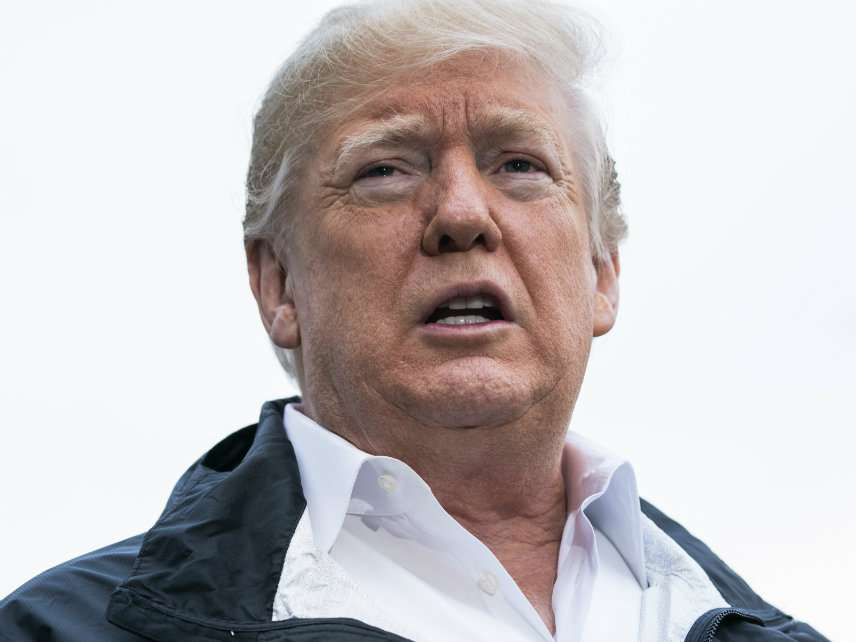Trump Administration Set to Announce Pointless, Legally Dubious Bump Stock Ban
Even the Obama administration recognized it didn't have the authority to ban bump stocks.

Bump stocks are modifications that can be attached to a rifle to increase the rate of fire, often at the expense of accuracy. Nine months after President Donald Trump endorsed a ban on the devices, the administration appears to be on the verge of banning them.
CNN was the first to report the news yesterday evening, citing "officials familiar with the matter." An administration official confirmed to The New York Times that the rule would be unveiled "in the coming days to weeks." Under Trump's new regulation, a source tells CNN, bump stock owners would have 90 days to get rid of the devices on their own or turn them over to authorities.
The issue first rose (temporarily) to the forefront of the national conversation after the October 2017 Las Vegas shooting, where a gunman used such devices as he killed 58 people.
In February 2018, another mass shooting occurred, this one at Marjory Stoneman Douglas High School in Parkland, Florida. Though the shooter did not use a bump stock, Trump announced in the aftermath of the tragedy that he would be banning the accessories, directing then–Attorney General Jeff Sessions "to propose regulations that ban all devices that turn legal weapons into machine guns."
In the following months, Trump continued signaling his intention to make bump stocks illegal. "So we're knocking out bump stocks," the president said in October. "And we are in the final couple of weeks."
The administration probably doesn't have the legal authority to do this. Under federal law, a machine gun is defined as "any weapon which shoots, is designed to shoot, or can be readily restored to shoot, automatically more than one shot, without manual reloading, by a single function of the trigger." But a gun equipped with a bump stock is still able only to fire just one round per trigger pull. "Instead of squeezing the trigger, the shooter holds his trigger finger steady while pushing the barrel forward with his other hand, thereby firing a round," Reason's Jacob Sullum explains. "The recoil repositions the trigger, and continuing to exert forward pressure on the barrel makes the rifle fire repeatedly."
As Reason's Christian Britschgi explained in March, this is probably why the Bureau of Alcohol, Tobacco, Firearms, and Explosives (ATF) has said multiple times that federal restrictions on machine guns do not cover bump stocks. The Obama administration affirmed the legality of bump stocks on three different occasions: once in 2010, again in 2012, and once more in 2013.
As Sen. Diane Feinstein (D–Calif.) said in a February statement: The ATF "currently lacks authority under the law to ban bump stocks."
In addition to being legally questionable, a bump stock ban probably wouldn't do very much. No mass shooters before or after Las Vegas have used bump stocks to carry out their massacres. Even in Las Vegas, the death toll wasn't necessarily higher because the shooter used one.
Most gun enthusiasts have little need for bump stocks. So they're a relatively easy target for those who want more gun control, and a relatively easy sacrifice for gun rights advocates. Hence the reportedly pending ban. As Britschgi argued in October 2017: "Banning bump stocks is something that can be done without pissing too many people off, placating the crowd that after every shooting in America screams for somebody to do something."


Show Comments (169)